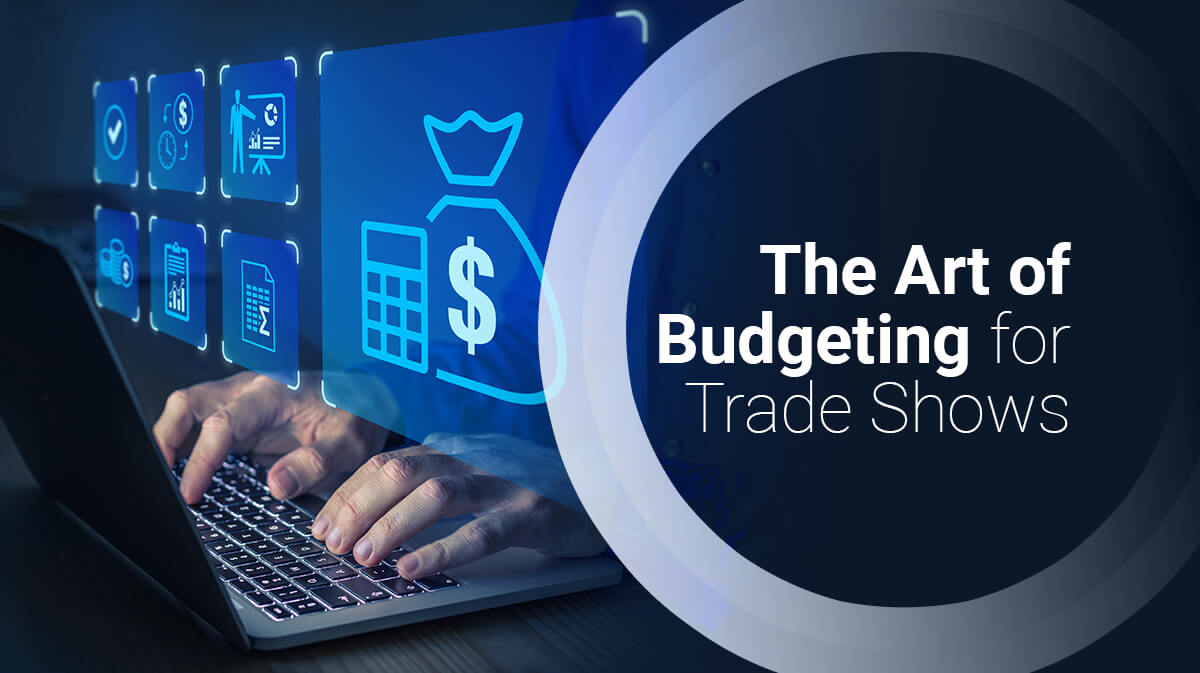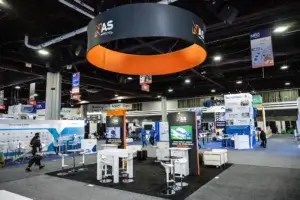
Learning to Budget for Trade Shows
Irrespective of whether you’re a well-established business or a fledgling start-up, your marketing plan could make or break your entire future. Of course, what a lot of people fail to realize is that a trade show is a crucial element in any sound marketing plan.
At these events, brands have the opportunity to develop their relationship with their customers, reach out to potential business partners, launch a new product or service, or simply build their brand visibility. While a trade show has unlimited benefits, the high price tag that is generally attached to such events generally deters companies from participating.
If you have a fairly small marketing budget but still wish to participate in a trade show, don’t worry. We’ve come up with a comprehensive guide that will help you understand how you should allocate your budget to the various aspects of your booth. With this handy guide, you’ll definitely be able to get the most value for your money without breaking the bank.
Here’s a quick look at how you could break down your budget across the various costs that are generally attached with participating in a trade show:
 Cost of the Exhibit Space
Cost of the Exhibit Space
This is by and large the most important part of your budget. Typically, you should dedicate around 30% of your entire trade show budget to purchasing the booth space. A majority of shows offer price per square foot, so the bigger your booth, the more you’ll have to shell out to pay for space.
If you have a larger trade show budget, it may be possible for you to rent out a 20×20 booth space or even a 50×50 space. On the other hand, if you’ve got a smaller budget, you could purchase a 10×10 space. At certain trade shows, there’s a fixed rate card for the booth spaces.
If you’re participating in one of these, it might be a good idea to book your space as quickly as possible so that you can find a space closer to the entrance and exit, where you’re assured of a higher footfall.
 Miscellaneous Services
Miscellaneous Services
A number of businesses may not know this but getting the finished booth to the hall and setting it up is actually quite costly. One of the costs involved is drayage, which refers to the specific task of shifting your exhibit from the convention hall’s docking bay to the rented space.
The costs of installing the booth and dismantling it also need to be accounted for. Additionally, the costs of maintaining the booth and storing it should also be considered.
These costs can be quite exorbitant, that’s why we’d advise keeping 19% of your entire trade show budget for these services.
Of course, if you choose to rent a booth instead of purchasing one, the rental company will look after all these aspects for you at a discounted cost, so you can funnel more money into the space rental or your booth’s design.
 Trade Show Booth Design
Trade Show Booth Design
Brands should never underestimate the power of a good booth design. The way your booth looks will differentiate you from everybody else on the floor, and it could either draw people in or send them running in the opposite direction.
In fact, we’d go as far as to say that your trade show exhibit is quite literally the centerpiece of your entire trade show campaign. Ideally, setting aside 10% of your budget for your trade show booth design is a good idea.
To ensure that the budget is enough to cover your design, you should start by listing out all the features that you’d like to include in your booth’s design. Then prioritize them and see which ones you can afford and which you might not want to incorporate.
It’s a good idea to think about the costs of signage, banners, and all the graphics you need to ensure that your booth is the center of attraction on the floor.
Depending on the kind of business you are in and the budget you have, you could even consider converting your entire booth into a bar, a plane’s cockpit, a salon, or a number of other settings that will differentiate your booth from the other, more ordinary displays.
 Shipping
Shipping
You may have chosen to attend a trade show in a different state or even in a different country from where you generally operate. This will involve shipping your trade show booth from where it’s being manufactured to its final location on the trade show floor.
Depending on the distance, the way your booth is packed and how heavy it is, this could cost you a pretty penny. While you’re looking for a shipping company to partner with, you should keep in mind that you shouldn’t spend more than 10% of your complete budget on shipping.
Irrespective of how amazing or self-explanatory your booth may be, you will still need a well-trained staff to talk with potential clients, showcase your products and services to them, and hand out fliers and other marketing materials.
Typically, this will take up 20% of your budget, since you might have to pay for the travel, food, and accommodation for the staff as well. Additionally, you may also have to train the staff, which might take a little more time and money than you had initially assumed.
Promotions and Other Marketing
It’s a good idea to spend 5% of your budget on promotional activities both before and during the event. In the days and months leading up to the trade show, you could purchase ad space in local papers, or even buy advertising space on social media sites to let people know about the convention. During the event as well, you may want to have raffle draws or giveaways to promote your brand over others on the floor.
 Contingency Funds
Contingency Funds
The last 6% of your budget should be kept safe in case of emergencies. During the show, a panel may come undone or a member of your staff may be unable to complete their duties for the day.
In such cases, you may have to get some quick repair work done or temporarily hire another staff member. These unforeseen expenses could stretch your already thin budget, so it’s always a good idea to keep a contingency fund on hand.
While these guidelines will help you allocate your budget wisely, we also have a few tips on how you can gain the most from your trade show budget, even if you think it’s lower than most. You could:
Become a Sponsor
While this may seem counter-intuitive and a little more expensive than thrifty, choosing to become a sponsor could ensure that everybody who is attending the trade show is made aware of your brand’s name. Additionally, when you partner with the trade show organizer, you may be provided with larger booth space at a discounted price.
Consider a Rental
While purchasing a booth may be the dream, opting for a rental instead could do wonders for your budget. When you partner with a rental company, they will take care of your trade show booth design, the installation, dismantling, maintenance and storage of the booth. They’ll look after your entire trade show experience from start to finish and provide you with a rental for barely 30% of the cost of a purchased booth.
Don’t Neglect Your Display
Your booth’s display is of the utmost importance, so if you need to utilize more funds on the way your booth looks, don’t sweat it. Instead, you could consider cutting your staffing budget by asking employees to volunteer to man the booth instead of hiring a team to do it.
Create a Smart Marketing Plan
With the advent of social media, it’s become incredibly easy to reach out to a wide audience with little to no monetary investment. To create a buzz about your role in the trade show, you could share behind-the-scenes videos on your social media pages or even run fun competitions on your Facebook and Twitter handles to get people involved.
Now that you know exactly how to plan your finances for your trade show, you can go ahead and start designing your booth and its graphics and prepare to smash every convention out of the ballpark.
